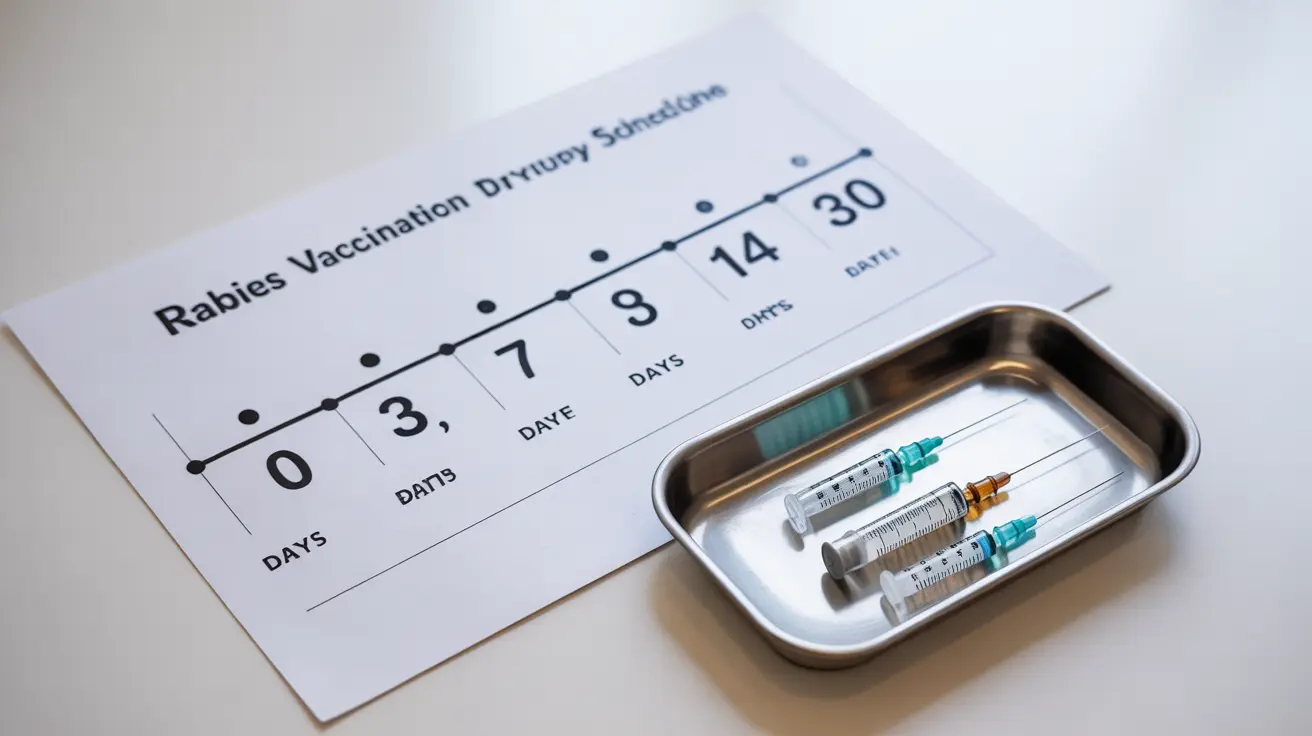Getting bitten or scratched by a potentially rabid animal can be a frightening experience. Understanding when to get a rabies shot is crucial, as rabies is nearly always fatal once symptoms appear. This guide will help you understand the timing, doses, and critical information about rabies vaccination.
Understanding Rabies Exposure and Risk
Rabies exposure typically occurs through animal bites, scratches, or when infected saliva enters an open wound or mucous membrane. Common rabies carriers include bats, raccoons, skunks, foxes, and unvaccinated domestic animals. Any potential exposure should be taken seriously and evaluated promptly by a healthcare provider.
Immediate Steps After Potential Exposure
If you've been exposed to a potentially rabid animal, take these immediate actions:
- Thoroughly wash the wound with soap and water for 15 minutes
- Seek immediate medical attention
- Try to safely contain or identify the animal if possible
- Contact local animal control for guidance
Timing of Post-Exposure Prophylaxis (PEP)
The timing of rabies vaccination is critical. Post-exposure prophylaxis should begin as soon as possible after exposure, ideally within 24 hours. However, since the rabies virus typically travels slowly through the nervous system, starting treatment even several days after exposure can still be effective.
Vaccination Schedule for Previously Unvaccinated Individuals
For people who have never received rabies vaccination before, the standard post-exposure schedule includes:
- Day 0: First dose of vaccine plus Rabies Immunoglobulin (RIG)
- Day 3: Second vaccine dose
- Day 7: Third vaccine dose
- Day 14: Fourth vaccine dose
Pre-Exposure Vaccination
Some individuals at high risk of rabies exposure should consider pre-exposure vaccination. This includes:
- Veterinarians and animal handlers
- Laboratory workers handling rabies virus
- Wildlife officers and researchers
- International travelers to high-risk areas
When Additional Doses Are Needed
Previously vaccinated individuals who experience a new rabies exposure typically need only two vaccine doses (on days 0 and 3) and do not require rabies immunoglobulin. This abbreviated schedule is one of the benefits of pre-exposure vaccination.
Frequently Asked Questions
When should I get a rabies shot after being bitten or exposed to a potentially rabid animal?
Seek medical attention immediately after exposure. Rabies shots should ideally begin within 24 hours, though treatment can still be effective if started several days after exposure. The key is to start treatment before any symptoms appear.
How many rabies vaccine doses do I need if I have never been vaccinated before?
If you've never been vaccinated, you'll need four doses of the rabies vaccine over 14 days, plus rabies immunoglobulin (RIG) at the start of treatment. The shots are given on days 0, 3, 7, and 14.
What is the difference between pre-exposure and post-exposure rabies vaccination schedules?
Pre-exposure vaccination consists of three doses over 21-28 days. Post-exposure prophylaxis requires four doses plus RIG for unvaccinated individuals, or two doses for previously vaccinated people.
Can a rabies vaccine still work if symptoms of rabies have already appeared?
No, once rabies symptoms appear, the vaccine is no longer effective. This is why it's crucial to begin treatment immediately after potential exposure, before symptoms develop.
Do I need a rabies shot if I was previously vaccinated and then exposed again to rabies?
Yes, but you'll need fewer shots. Previously vaccinated individuals require only two doses (on days 0 and 3) after a new exposure, and don't need rabies immunoglobulin.




